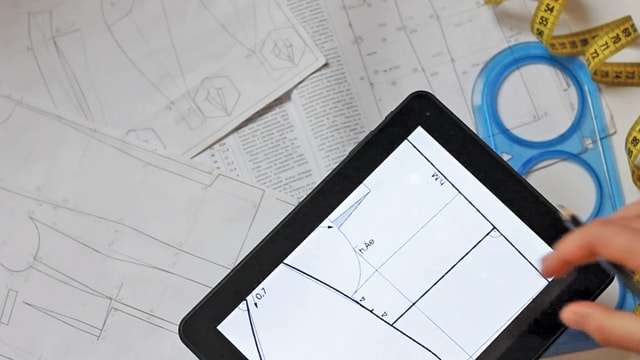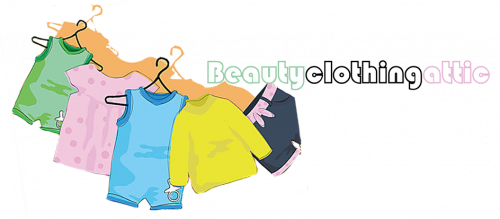The technologists world over are trying to standardize and automate as many activities as possible to reduce human-variability and human-dependency, thus increasing labour productivity. While there are many challenges to automation in sewing, numerous tasks are silently inching towards complete automation. Dr. Prabir Jana, NIFT Delhi explains in this article why he feels any activity that can be explained logically or mathematically, can be automated.
Fashion Designing

Fashion is synonymous to change and fashion designers are considered to be the only creative and inexplicable entities in the apparel manufacturing supply chain. Designers like Gaurav Gupta and Falguni & Shane Peacock (FSP) (two strong voices in India’s fashion and haute couture circuit), have recently collaborated with IBM India to give the world a glimpse into the creative potential of Artificial Intelligence (AI). The designer duo teamed up with Watson to reimagine fashion – the result was India’s first AI-inspired Western fashion collection. At the same time, couturier Gaurav Gupta worked with Watson’s Personality Insights API and IoT integration to bring to life the first AI-inspired saree gown. Are we then ready for the world’s first robot fashion designer very soon?
Forecasting

The age-old thinking of forecasting or predicting what colour, silhouette, and fabric will sell is impossible to change. Urban Outfitters in the US has already been using AI to predict sale. Stylumia is promising to remove the uncertainty from fashion and is endeavouring to increase its full price sell-through and Stitch Fix® is the personal style service that evolves with one’s tastes, needs and lifestyle. All are using AI and machine learning. Although the AI experiments in design and forecasting are revolutionary, it would still take some years to actually forecast with the help of the computer.
Pattern Making

Pattern making has been long considered an art, and this CAD application was pushed in the realm of computer operation. The strong-headed pattern makers across continents did not believe that pattern can be directly drafted in scaled-down size on the computer screen and rather insisted that the first pattern needs to be drafted manually in actual size and then it should be digitized/scanned/photographed for input into the computer. Although few computer-aided pattern making software brands like Yuka & Alpha from Japan and Astor from India dared to create auto-pattern generation module from the measurement chart, acceptability was negligible due to strong designers of big brands still not letting go of their control over the first pattern making. The popular CAD brands (such as Lectra and Gerber) even tried to please the designer community by creating real-size digital pattern table for developing the first pattern digitally. Decades passed by with the adoption of PDS (Pattern Design Software) module gradually finding its way into the manufacturing supply chain and now it is moving upstream.
Making a pattern from measurement chart follows 2D drafting logic, albeit variable. As it has to follow some theories/logic or other, the pattern can be created automatically without any human intervention. The last wicket (resistance), which is in the hands of the designer is going to fall soon and it would not be long before we see the transformation of automatic pattern generation from measurement chart.
Cut Order Planning
This is an activity very similar to goal programming in operation research. Cut order planning involves multi-objective optimisation, i.e. while fabric utilisation has to be maximised, labour cost has to be minimized. It can be thought of as an extension or generalisation of linear programming to handle multiple, normally conflicting objective measures. Each of these measures is given a goal or target value to be achieved. While the earlier solutions (Optiplan, AMS Cutplan, etc.) were too scientific (complex) and rigid to be handled by the industry, newer generation solutions (Intellocut from Threadsol) are showing greater level of acceptability. This can be contributed to more adaptive and user-centric approach. Cut order planning was, is and will remain automated, only industry adoption will grow at faster pace now.
TnA planning
Also called critical path method (CPM), this activity is largely misunderstood by the industry. In the guise/excuse of uniqueness, every brand/retailer tends to follow their own method. Around 60+ interdependent activities pertaining to a style, mostly human-driven, need to be tracked by merchandisers. These activities ideally are to be recorded as precedence diagram (PERT network or GANTT chart) and scientifically are to be solved by critical path method (CPM) and more precisely by critical chain logic (Goldratt fame). Unfortunately this TnA planning activity is still handled by the industry using spreadsheet, which is ill-equipped to do so. With gradual increase in awareness and dependence on technological solutions, the inevitable (of automating the TnA activity) will happen soon.
Production Planning
This activity follows purely logical and mathematical deductions and falls in the genre of Advanced planning and scheduling (APS) which refers to a manufacturing management process by which raw materials and production capacity are optimally allocated to meet demand. APS is especially well-suited for an environment where simpler planning methods cannot adequately address complex trade-offs between competing priorities. Production scheduling is intrinsically very difficult due to the (approximately) factorial dependence of the size of the solution space on the number of items/products to be manufactured. APS is particularly suitable for apparel manufacturing due to:
• make-to-order (as distinct from make-to-stock) manufacturing
• plant capacity being constrained
• many different products being produced in each facility
• production necessitating frequent schedule changes which cannot be predicted before the event
Currently there are companies following APS-based software solutions, however, they are using the solutions as a tool to help human production planners and would soon be automated.
Sewing Line Balancing
An assembly line is a flow-oriented production system where the productive units performing the operations, referred to as stations, are placed in a serial manner. The cut panels reach the sewing station successively as they are moved along the line usually by some kind of transportation system such as the conveyor belt. While UPS system of sewing represents pure serial arrangement of workstations (a U-shaped arrangement), PBU system of sewing is a mix of parallel and serial arrangement.
However, the workplaces in other industries are machine-driven and even use simulation to predict and optimise the output. But, the production managers in apparel sewing factories globally have long resisted use of any system for line balancing. The human-driven workstations (as against machine-driven in other industry) was the only bone of contention as data generated are based on human performance, thus susceptible to variations beyond control. In past, researchers have tried to simulate the sewing line unsuccessfully, primarily because the logic used the data of the past to predict the future. With AI becoming affordable, and powered by real-time physiological data, the automated line balancing and simulation may become reality in sewing line soon.
Fabric Inspection
Fabric inspection was traditionally a manual process as defining defects in fabric was very much subjective and proved to be one of the most difficult of all textile processes to automate. Current automated fabric inspection systems are based on adaptive, neural networks which can learn. Now automated fabric inspection machines are equipped with CCD/CMOS cameras, which scan the fabric using advanced Fractal scanning techniques and use Fuzzy Wavelet Analysis. The users are able to simply scan a short length of good quality fabric to show the inspection system what to expect. Although the solution has been there for decades, the acceptability was limited to large textile producers with low variability in product range and also prohibitive cost. With AI and increasing processing speed of vision system, the low-cost automotive and adaptive fabric inspection system will soon be a reality.

Leave a Reply